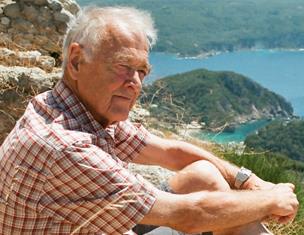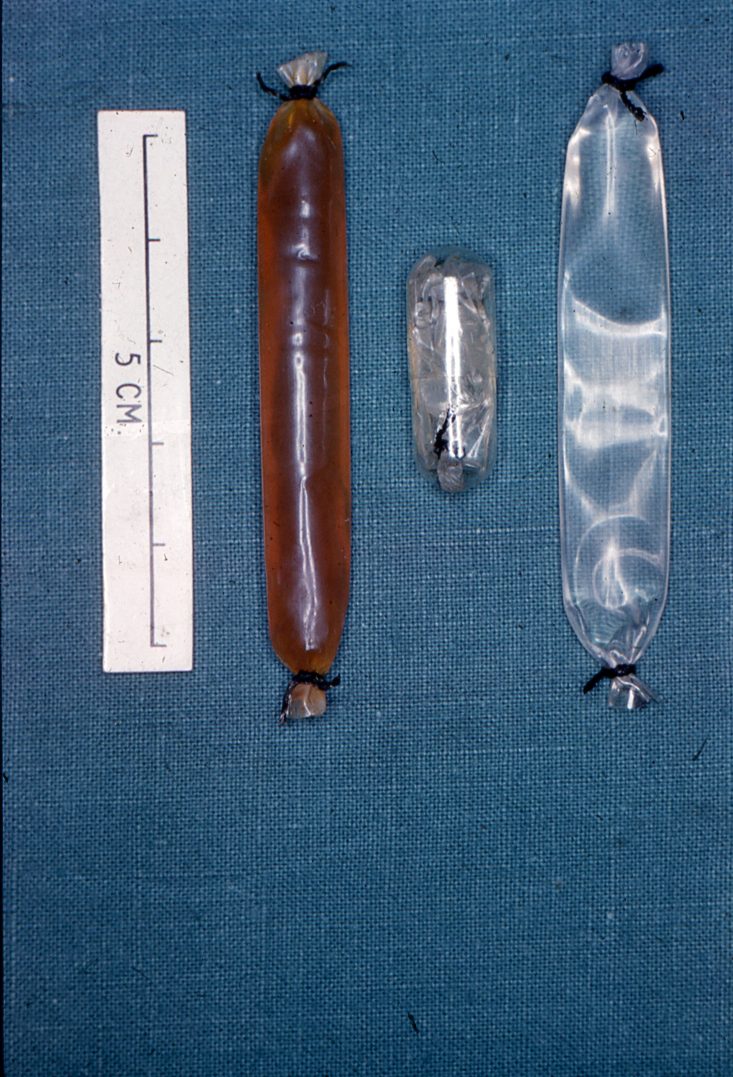Todd Ing

Professor Oliver Wrong (Figure 1), a giant in renal medicine, passed away on February 24, 2012. At the age of 87, his death should not, perhaps, have seemed untimely and shocking. But Oliver remained intellectually productive until the very end, working to expand science’s understanding of how the body regulates fluid, salt and mineral content, and his absence is felt not only by family and friends but colleagues and collaborators.
I was fortunate enough to work as a research fellow under Oliver’s tutelage at the Hammersmith Hospital in London from 1961-1962. There, I carried out the classic Wrong and Davies test to diagnose renal tubular acidosis1, the first devised for measuring this unusual type of disease, in which the kidneys harden, bones become brittle and metabolic acid levels rise. The test, which had been written up by Oliver a few years earlier, involved collecting urine to measure pH, titratable acidity and ammonium after administration of ammonium chloride as a stress acidifying agent. Half a century later, it is still a standard tool in the armory of nephrologists across the world and the Quarterly Journal of Medicine article that described the method has become a citation classic.
Thanks to Oliver, a great believer in self experimentation, I also became involved in another ground-breaking study: the dialysis of feces, using “bags” designed in his laboratory. For this study, in which family members and colleagues were recruited to help, small cellulose tubing segments filled with low-molecular-weight dextran were tied at both ends and left to dry at room temperature. Later these dried segments were remoistened with water and inserted into small soluble gelatin capsules, which could easily be swallowed over a breakfast cup of coffee. On retrieval from the feces, the cellulose segments would be found to be distended with a brownish fecal fluid (Figure 2), which was then analyzed to study gastrointestinal solute transport in both normal subjects and in patients with renal failure. In the course of my involvement with this project, every step of which was closely supervised by Oliver, I learned a great deal about gastrointestinal physiology and investigative know-how. The “bags” allowed precious “in vivo” insight into the colon’s hidden workings, and Oliver produced many of them, most of which he swallowed himself.

(a) filled with dextran, (b) inserted into a capsule,
and (c) retrieved from feces.
Part of a generation of young doctors who helped establish Britain’s post-war National Health Service, Oliver’s career spanned six decades. Nearly two of those decades were spent running London’s University College Hospital (UCH) as Professor of Medicine, helping to turn it into a world-recognized center of excellence.
Born in 1925, his roots lay in Oxford’s intelligentsia, in a large family whose members valued the life of the mind above human comforts and material wealth. His mother, Rosalind Smith, was the daughter of the Master of Balliol, his father a brilliant Canadian historian who lectured at Magdalen College until he died of rheumatic heart fever, when Oliver was only three. The family split in two, with three of six siblings – including Oliver – raised in Canada by grandfather George Wrong, an eminent historian, as the Great Depression got under way.
He attended schools in Toronto and Edinburgh, then moved to medicine at Magdalen College and at Oxford’s Radcliffe Infirmary. Military service in Singapore and Malaysia –a period which left Oliver with a permanent affection for Southeast Asia – was followed by stints at the Toronto and Massachusetts General hospitals. Working in Boston with Fuller Albright and Alex Leaf, he developed a lifelong interest in salt and water metabolism, which he was pursuing when we met in Hammersmith in the 1960s. By then he had married the love of his life, Marilda Musacchio, an Italian primary school teacher from the Val d’Aosta, whose loyal support in many ways made his brilliant medical career possible.
In 1972, after three years as Professor of Medicine at Dundee University, Oliver became the Director of Medicine at UCH. Here Professor Charles Dent, a pioneer in calcium and bone metabolism and a mentor of Oliver’s, had earlier studied two boys suffering from rickets, hypercalciuria and renal tubular damage. Working doggedly, Oliver and his team were subsequently able to find similar patients. Two forms of the disorder are now recognized and other manifestations of the disease include the Fanconi syndrome, kidney stones, nephrocalcinosis, proteinuria and renal failure2. Oliver and Professor Rajesh Thakker were able to determine that the problem was a sex-linked recessive inherited dysfunction of the renal proximal tubule, and thenobtain evidence indicating that the disorder was related to a mutation in the CLCN5. Not all patients had CLCN5 mutations, and work with Professor Steve Scheinman demonstrated that certain patients had OCRL1 mutations instead. Oliver named this condition “Dent’s Disease”, in tribute to his late friend. Since Oliver played such a key role in describing this disorder, it would perhaps be appropriate now to rename the ailment “Dent-Wrong Disease”. He also contributed significantly to understanding of a form of renal tubular acidosis caused by a defect in the AE1 band 3 anion exchanger.
Oliver was in many ways a typically diffident Englishman, but his actions proved louder than words. The link with patients, who found in him a patient listener and compassionate healer, was always paramount, a source of steady observation and fresh inspiration. He always showed kindness and concern to younger colleagues and went to great lengths to offer career advice and professional support, help which often extended over the decades. Some time after the completion of my fellowship, I was pleasantly surprised to learn that Oliver had named me as co-author of several articles describing the results of the fecal dialysis experiments which were published in prestigious scientific journals. When introducing his renal fellows to others, he would always present them as his colleagues rather than trainees: a small but characteristic act of generosity.
Apart from his devotion to renal disease, Oliver’s interest in colonic function and physiology culminated in the writing, with V. Chadwick and C. Edmonds, of another important classic, a reference book entitled “The Large Intestine – Its Role in Mammalian Nutrition and Homeostasis (1981)”. After his nominal retirement in 1990, Oliver remained active in his field and much of his best work was produced during these years. Diagnosed with pulmonary fibrosis seven years ago, he continued to work notwithstanding and was dictating amendments to the last of over 130 papers from his bed in intensive care. He died in his old London hospital, leaving behind his widow, Marilda, and two daughters.
Such dedication to science inspires us all. It is often said that people climb onto the shoulders of giants to see further. Many budding physicians and scientists will climb onto Oliver’s broad shoulders – though some will not know it – the better to survey and analyze the terrain which so fascinated and intrigued him.
Acknowledgement: This article was first published by Wiley Periodicals in Artificial Organs. 2012 Dec;36(12):1009-11 and reproduced with permission. It may also be accessed on Wiley Online Library. The author wishes to thank Ms. Michela Wrong and Professor Rajesh Thakker for their assistance in the preparation of the In Memoriam.
References
- Wrong O, Davies HEF. The excretion of acid in renal disease. QJM 1959;28:259-313.
- Wrong OM, Norden AG, Feest TG. Dent’s disease; a familial proximal renal tubular syndrome with low-molecular-weight proteinuria, hypercalciuria, nephrocalcinosis, metabolic bone disease, progressive renal failure and a marked male predominance. QJM 1994;87:473-93.
TODD S. ING, MB, FRCP, Professor Emeritus of Medicine, Stritch School of Medicine, Loyola University Chicago, Maywood, Illinois.

Leave a Reply